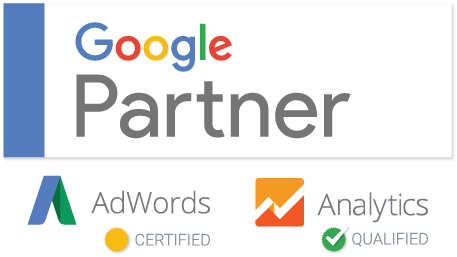Modern marketing departments have to manage several moving parts. A large part of this management involves ensuring that team members can fluidly switch between different personas depending on the task at hand. For example, if a social media manager needs to share an article or PR piece from multiple accounts within the same company, they should be able to do so quickly, without logging in and out repeatedly—reducing the risk of errors.
At a certain point, managing multiple brands, identities, and login credentials in a mental log or spreadsheet becomes too cumbersome. Fortunately, there are plenty of tools available to help, including RoboForm, Hootsuite, and Gmail’s account-linking or delegation feature. This article serves as a step-by-step guide to help you get started.
Linked Accounts in Gmail
Marketers frequently switch between different roles to align with their clients’ business goals. For instance, you wouldn’t want to clutter a client’s primary inbox by using their email to correspond with vendors or sign up for directories. This often results in managing multiple email accounts, usually Gmail accounts. Constantly logging in and out is not only inconvenient but also increases the likelihood of mistakes. So, how can you streamline this process?
By linking Gmail accounts through a feature called mail delegation. This tool is particularly useful for marketing teams with multiple employees, as it allows users to delegate email access to other administrators (i.e., team members within the company).
How to Set Up Gmail Delegation:
-
- Open Gmail and click on the gear icon (⚙️) in the upper-right corner of the page.
- Select Settings.
- Navigate to the Accounts tab.
- Find the “Grant access to your account” section and click “Add Another Account.”
- Enter the email address of the person you want to grant access to, then click “Next Step.”
(Note: This feature only works with Gmail addresses. If the person doesn’t have one, they’ll need to create a Gmail account.) - Review the confirmation message.
- Click “Send email to grant access.”
- The delegate will receive an overview email. However, it’s still a good idea to confirm with them personally to ensure they understand their new responsibilities.
Important Limitations of Gmail Delegation:
- No chat or account setting access: Delegates can read, respond to, and delete emails but cannot change settings or passwords.
- Security concerns: Frequent access from different locations may trigger Gmail’s security measures, temporarily locking the account.
- User limits: You can delegate up to 10 users with a standard Gmail account, or up to 25 users if you’re using Google Workspace (formerly G Suite).
- Easy removal: If needed, you can revoke access by following steps 1-4 and selecting “Delete” next to the delegate’s name.
As one Business Insider review puts it:
“Once you’re up and running, you’ll never want to go back.”
RoboForm Identity Manager
RoboForm is commonly known as a password management system, but it also helps organize and manage multiple web identities.
First, determine which version of RoboForm suits your needs:
- Standard: Installed on a single system (best for sole proprietors).
- RoboForm Everywhere: A cloud-based solution that syncs across multiple devices (ideal for agencies with multiple team members).
- RoboForm2Go: A portable USB version for those who frequently travel or present.
How to Set Up RoboForm:
- Visit www.roboform.com.
- Click the green “Download RoboForm Now” button.
RoboForm works with Firefox, Chrome, Safari, and Internet Explorer, and is compatible with:- Mac
- Windows
- Linux
- Android
- iPhone/iPad
- Windows Phone
- Windows Metro
- Use RoboForm to manage your identities, auto-fill web forms, sync data, and access multiple sites efficiently.
Just like you would maintain a password manager, RoboForm allows you to maintain a grid of identities and associated contact information, streamlining account management.
Hootsuite: Social Media Management
Hootsuite describes itself as a “social media management dashboard”, making it a must-have for marketers handling reputation management. If you’re managing a client’s Facebook, Twitter, Tumblr, LinkedIn, or Google+ accounts, Hootsuite simplifies the process.
Key Benefits of Hootsuite:
- Schedule posts in advance: Ensures content goes live during peak traffic hours.
- Target different demographics: Essential for agencies managing clients across industries.
- Share dashboards: Similar to Gmail delegation, this feature allows you to grant team members different levels of access.
- Assign tasks and manage approvals: Reduces the risk of posting unapproved content.
Hootsuite offers two plans:
- Pro: Ideal for small agencies.
- Enterprise: Designed for large corporations with multiple employees.
How to Set Up Hootsuite:
- Visit Hootsuite Sign-Up and create an account.
- Click “Connect Social Networks”, then select “Add Social Network” and choose the platforms you manage.
- Use Tabs and Streams to organize accounts.
(A single dashboard holds up to 20 tabs, each containing up to 10 streams, allowing for a total of 200 streams.) - Schedule and send posts by selecting the desired social network, composing a message, and clicking “Send.”
- Install Hootsuite apps (some are free; others require payment) via the puzzle piece icon in the dashboard.
- Download Hootsuite Mobile: Mobile traffic is growing rapidly—ignoring mobile users means missing out on a large audience.
According to BrightEdge Mobile Share, mobile accounted for 30% of all site traffic in 2013, a 125% increase from 2012. With numbers like that, ensuring smooth mobile access is no longer optional.
Conclusion
Managing multiple accounts, identities, and brands is a challenge, but tools like Gmail delegation, RoboForm, and Hootsuite simplify the process, making marketing tasks more efficient and secure. By integrating these tools into your workflow, you can minimize errors, save time, and optimize your overall productivity.





